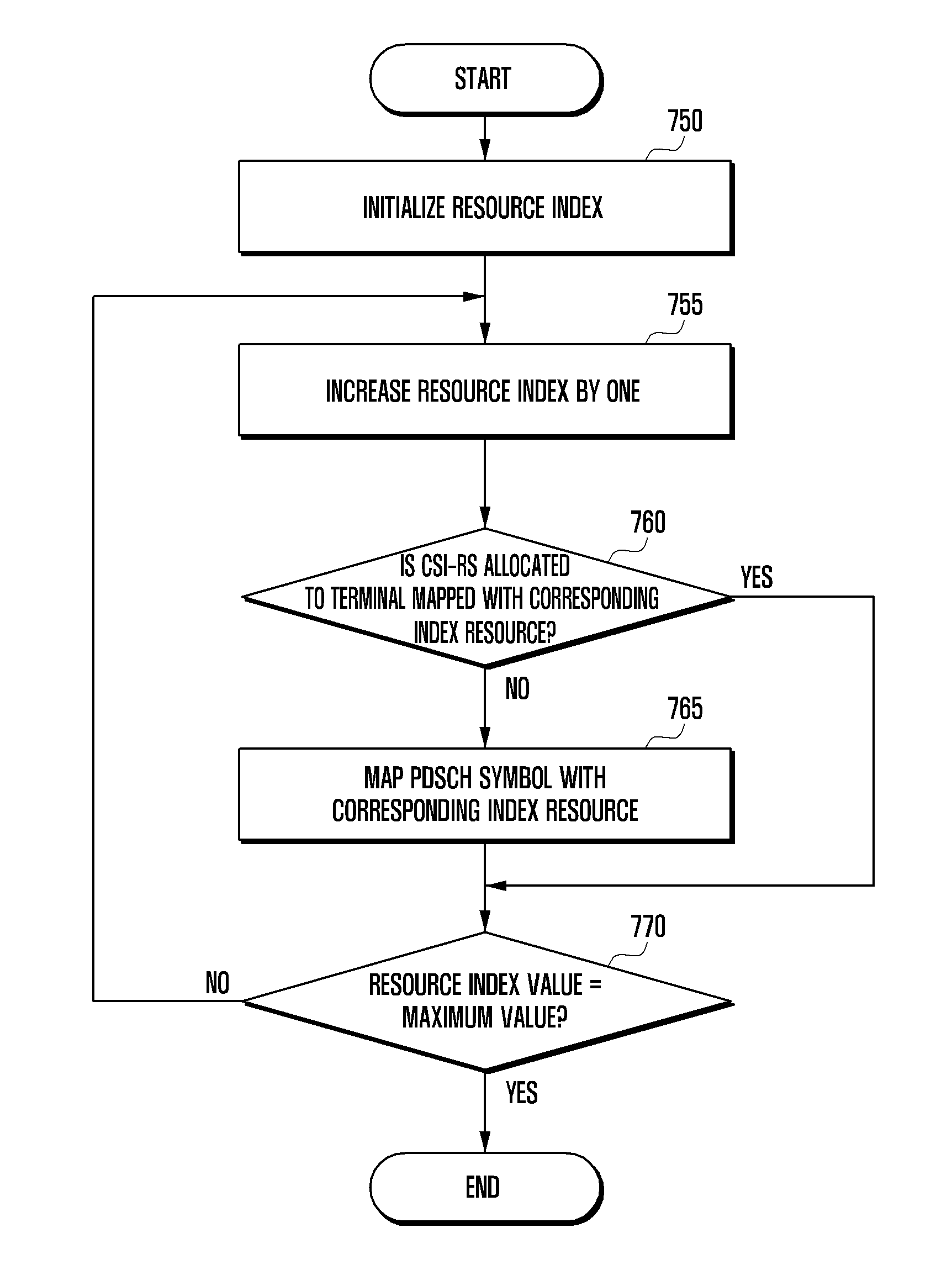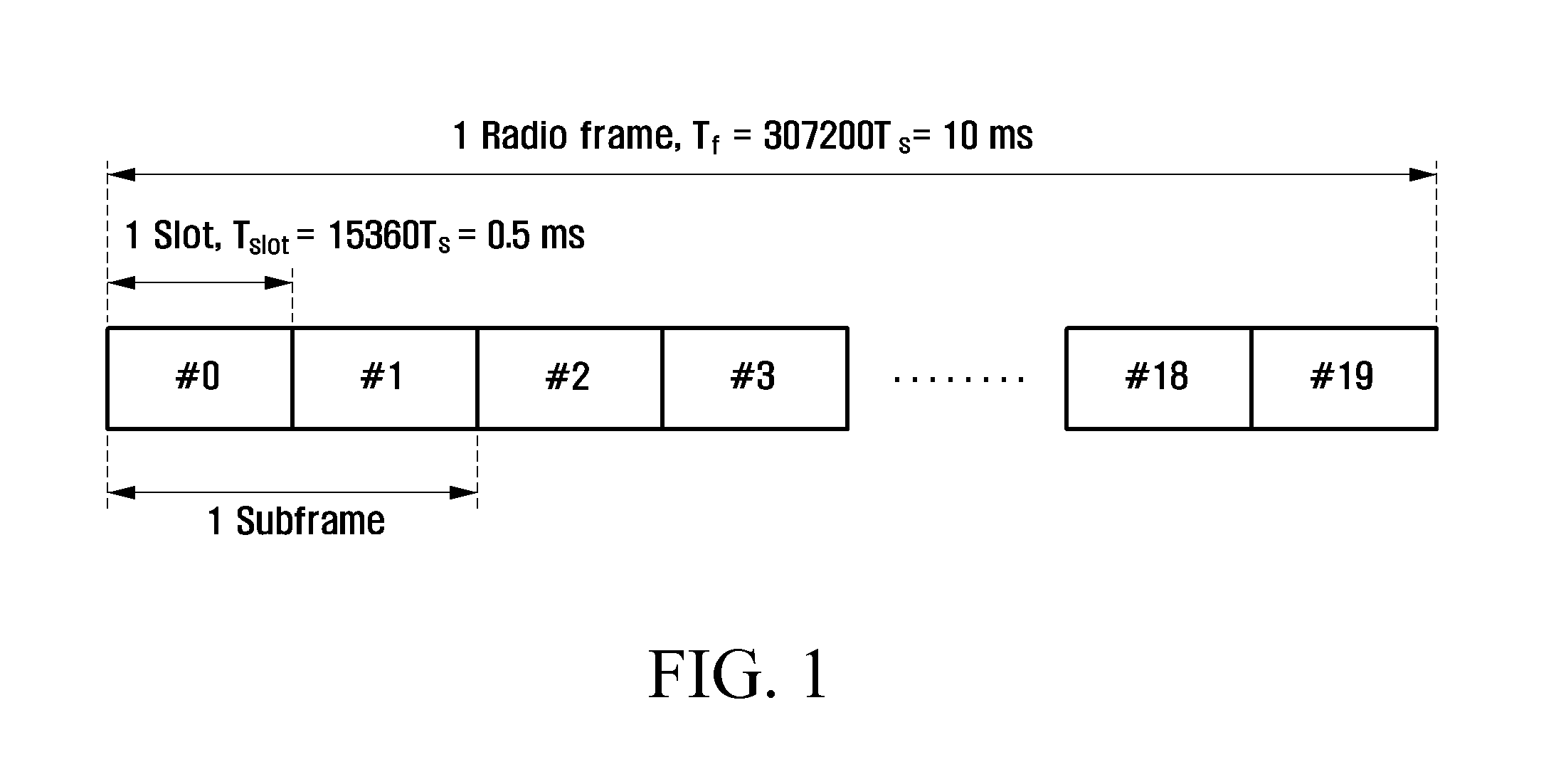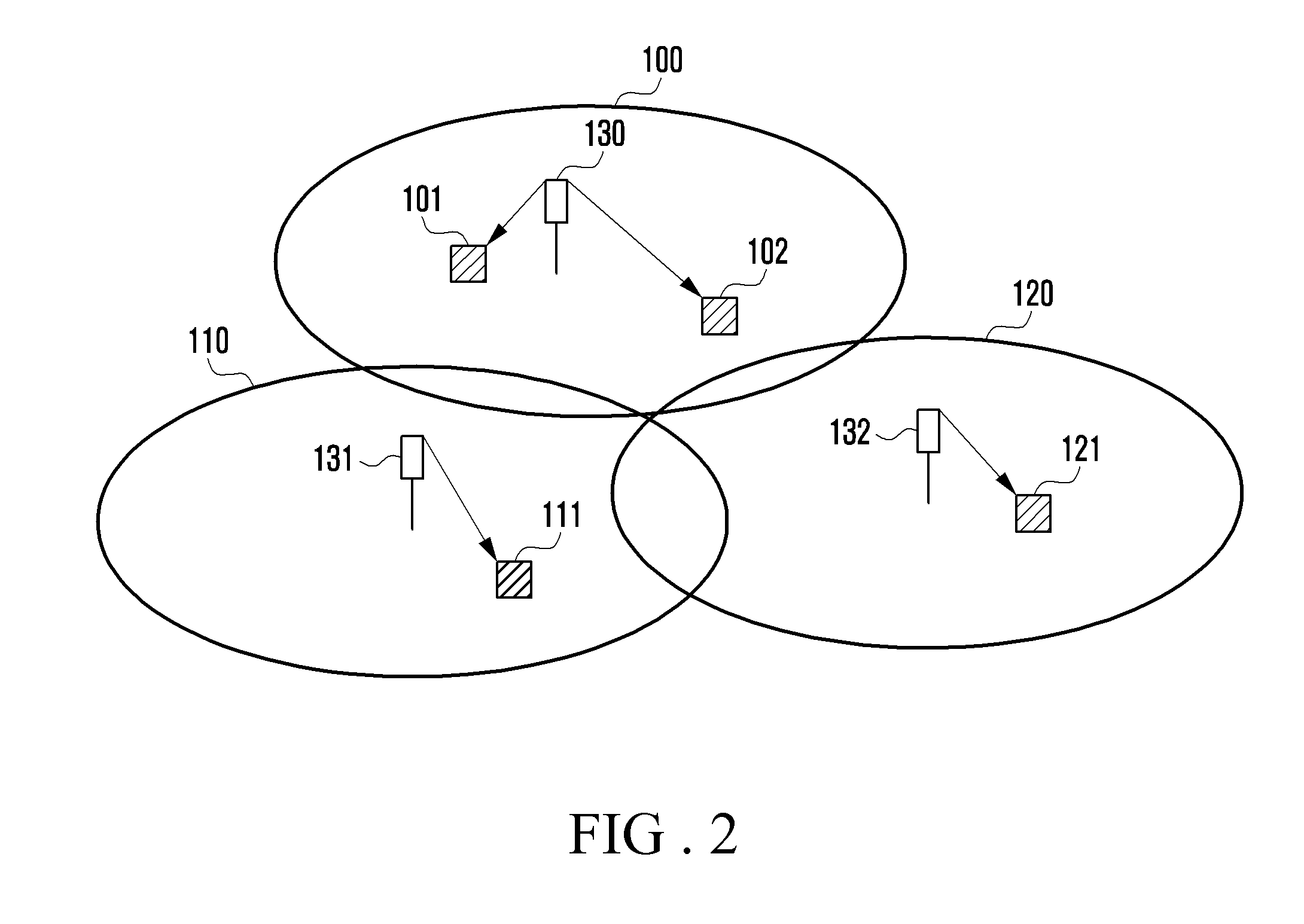Apparatus for transmitting and receiving downlink data in wireless communications system supporting cooperation between transmission points and method therefor
wireless communication technology, applied in the field of apparatus and a wireless communication system for transmitting and receiving downlink data, can solve problems such as waste of resources, and achieve the effects of improving wireless communication services, high data reception rate, and enhancing the information reception rate of the terminal
- Summary
- Abstract
- Description
- Claims
- Application Information
AI Technical Summary
Benefits of technology
Problems solved by technology
Method used
Image
Examples
embodiment 1
[0079]A method of simply defining the PDSCH transmission resource in the case of a plurality of CSI-RS resources allocated to the resource block is to define that the PDSCH is not transmitted to all of the time frequency resources allocated with the CSI-RS resources.
[0080]FIG. 6 illustrates Embodiment 1 in which PDSCH symbols are mapped. Referring to FIG. 6, the central control device may map the PDSCH symbols, i.e., the data, in an order of the index from the lowest one to the highest one such that: the resource positions, where the CSI-RSs (CSI-RS-1, and CSI-RS-2) allocated to the terminal are mapped, are skipped, and the next PDSCH symbol is mapped with the next frequency resource. Here, the CSI-RSs (CSI-RS-1, and CSI-RS-2) allocated to the terminal may be the CSI-RSs corresponding to the resource management set mentioned above.
[0081]The method in which the PDSCH symbols are mapped in sequence while skipping specific resources may be referred to as a rate matching method. That is...
embodiment 2
[0090]As the second method for defining the PDSCH transmission resource in the case of a plurality of CSI-RS resources allocated to the resource block transmitted to the terminal, the rate matching method mentioned above may be applied to the CSI-RS resources included in the CoMP measurement set, and the PDSCH symbols may be mapped with positions of the CSI-RS resources that are not included in the CoMP measurement set.
[0091]FIG. 8 illustrates Embodiment 2 for mapping the PDSCH symbols. Referring to FIG. 8, the central control device may map the PDSCH symbols in an order of the index from the lowest one to the highest one, and if a specific index resource corresponds to the CSI-RS resource (CSI-RS-3) allocated to the terminal and belongs to the CoMP measurement set, may skip the PDSCH symbol ma-Ting with respect to the corresponding resource so that the next PDSCH symbol is mapped with the next frequency resource.
[0092]On the contrary, if the time frequency resource of a specific in...
embodiment 3
[0156]As the third method for defining the PDSCH transmission resource in the case of a plurality of CSI-RS resources allocated to the resource block transmitted to the terminal, the central control device may directly configure whether or not the rate matching is applied to a specific CSI-RS resource using the RRC signal, and may determine the PDSCH resource mapping according thereto.
[0157]FIG. 10 illustrates Embodiment 3 for mapping the PDSCH symbols. Referring to FIG. 10, the central control device may map the PDSCH symbols in an order of the index from the lowest one to the highest one, and if a specific index resource corresponds to the CSI-RS resource (CSI-RS-5) allocated to the terminal and if the CSI-RS is configured to apply the rate matching through the RRC signal, the central control device may skip the PDSCH symbol mapping with respect to the corresponding index resource so that the next PDSCH symbol is mapped with the next frequency resource.
[0158]On the contrary, if th...
PUM
 Login to View More
Login to View More Abstract
Description
Claims
Application Information
 Login to View More
Login to View More - R&D
- Intellectual Property
- Life Sciences
- Materials
- Tech Scout
- Unparalleled Data Quality
- Higher Quality Content
- 60% Fewer Hallucinations
Browse by: Latest US Patents, China's latest patents, Technical Efficacy Thesaurus, Application Domain, Technology Topic, Popular Technical Reports.
© 2025 PatSnap. All rights reserved.Legal|Privacy policy|Modern Slavery Act Transparency Statement|Sitemap|About US| Contact US: help@patsnap.com



